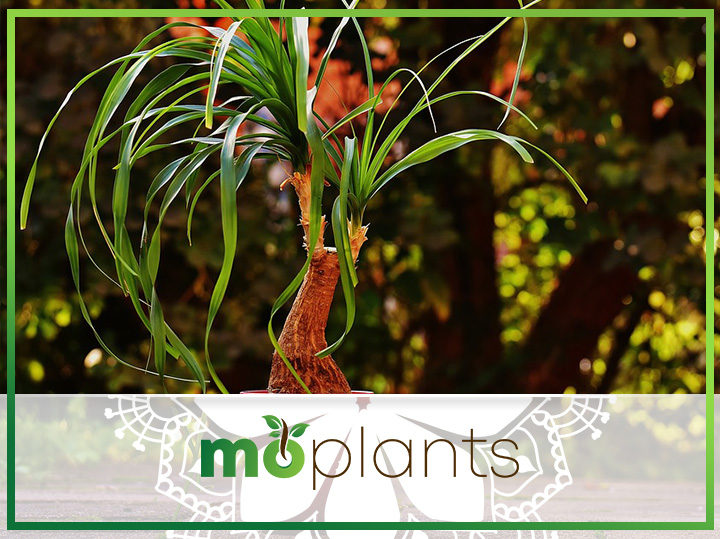Though it is neither a palm nor a tree, the peculiar yet captivating ponytail palm tree enjoys a favorable reputation among novice and seasoned gardeners. The bulbous trunk paired with cascading long and curly leaves add to the charming proportions of this vibrant plant, making it the center of attention in any house or backyard.
Interestingly, the ponytail palm is classified as succulent. It is highly resistant to drought and doesn’t require much maintenance. This plant is native to Central America and can survive for several decades in most climates. It is also very forgiving of neglect, so if you are just dipping your toes in the world of gardening or are unable to take care of the houseplants due to your busy schedule, raising a ponytail palm may be the best choice for you.
The aesthetic appeal and slow-growing nature of this green beauty make it a perfect plant to place on your work desk, nightstand, coffee table, and shelves. Once the plant begins to get taller, you can repot it into a bigger container and move it to any well-lit corner where it can continue to add a burst of color and positive energy to your space.
If you have fallen in love with the idea of buying a young ponytail palm tree, this handy guide will tell you everything you need to know about growing and taking care of this enchanting houseplant.
Introduction: Ponytail Palm
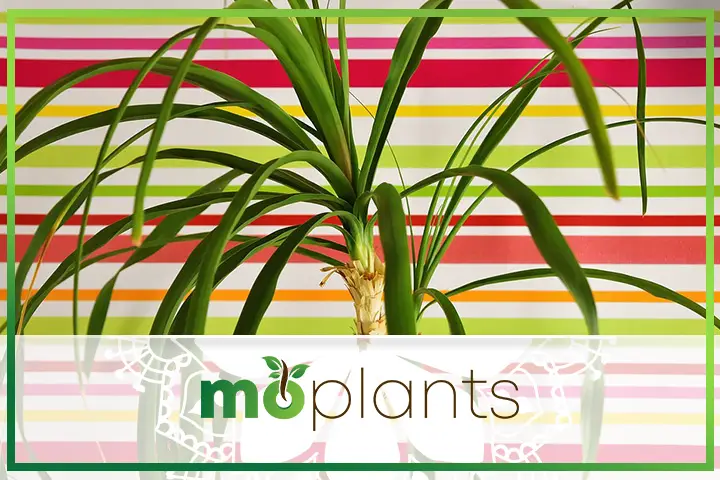
The botanical name of ponytail palm is Beaucarnea recurvate, and it is a member of the Asparagus family. Other popular aliases for this endearing plant include elephant’s foot or bottle palm tree. It is classified as a broadleaf evergreen tree commonly found in parts of southeastern Mexico and other semi-desert areas of Central America.
The most distinctive characteristic of the ponytail palm is its thick bulb-like trunk that tapers into a thinner stem. This part of the plant stores water, allowing the foliage to remain bright and healthy even if you forget to water it for a couple of weeks. Meanwhile, its long and narrow leaves grow from the top of the trunk in a rosette formation like a ponytail, giving the plant its iconic name.
In addition, you can place your beloved ponytail palm tree indoors and outdoors alike. When grown inside the home, these plants can reach the height of six to eight feet, with their spread measuring between three to five feet. However, if you decide to grow ponytail palm outdoors, it may tower over your house by growing up to 30 feet tall. Meanwhile, the leaves of this plant can grow up to three feet long when planted indoors and about six feet long outdoors.
Ponytail palm care is also rather simple, as all you need to do is protect the plant from harsh weather conditions and overwatering. This exotic beauty does well in a shallow container, which helps curb its growth indoors. It is also a fairly slow grower. A young one-foot-tall plant will take about five years to double in height in an average home environment.
Although most indoor plants may not flower, ponytail palm is a seasonal bloomer that may produce long, creamy white blossoms on top of its tufted foliage. The showy flowers grow erect before drooping and eventually falling off. The mature outdoor plants usually bloom in the spring and summer months, with some ponytail palms flowering up to three times per year.
Furthermore, this enticing houseplant grows well in USDA hardiness zones 10 to 11. The American Society for the Prevention of Cruelty to Animals (ASPCA) also lists ponytail palm as non-toxic to pets.
How to Grow Ponytail Palm
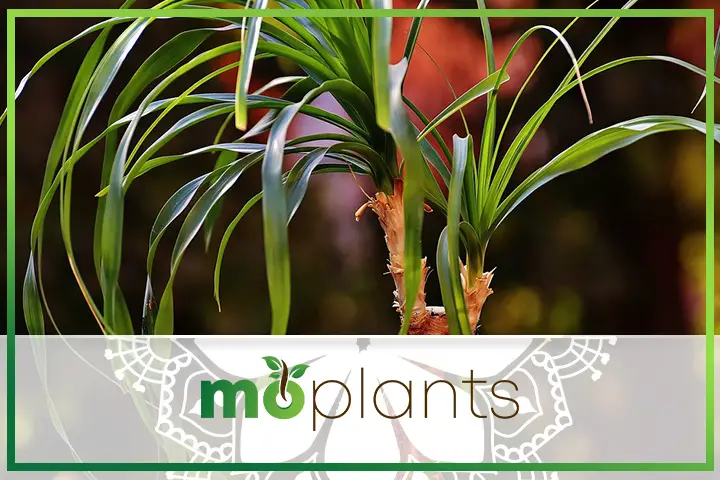
Planting and Placement
Spring is the best time to plant ponytail palm outdoors. Meanwhile, if you are planning to plant it indoors, you can do so at almost any time of the year.
This beautiful plant requires bright light to grow, so you should ideally place it in a sunny location close to a south-facing window. However, you must make sure to keep it away from vents and places where these desert-native plants may be exposed to high humidity and extremely cold air.
Exposure to Sunlight
The stunning ponytail palm thrives in both the full sun and indirect light. If you place this plant in a relatively dark corner of your home, it will grow at a much slower rate. Ensuring it receives the right amount of sunlight is an essential part of ponytail palm care.
Watering Frequency
During the growing season, watering your ponytail palm tree once every one to two weeks is usually sufficient for its growth. Since the trunks of these plants store water, overwatering may damage the roots and foliage alike. As the temperature gets colder, consider watering the plant once a month.
If you have planted your ponytail palm outdoors, you may not have to water it often as the roots can absorb moisture from the ground. Moreover, rainwater is usually enough to sustain the tree for a month. However, if you live in a dry climate that receives little to no rain, you may want to water the succulent every two weeks.
Potting Mix
Being native to semi-desert areas, ponytail palm trees flourish in sandy and well-draining soil with a pH level ranging between 6.5 and 7.5. You can use a specialized succulent or cactus potting mix with peat to grow this eye-catching plant indoors.
Infographic
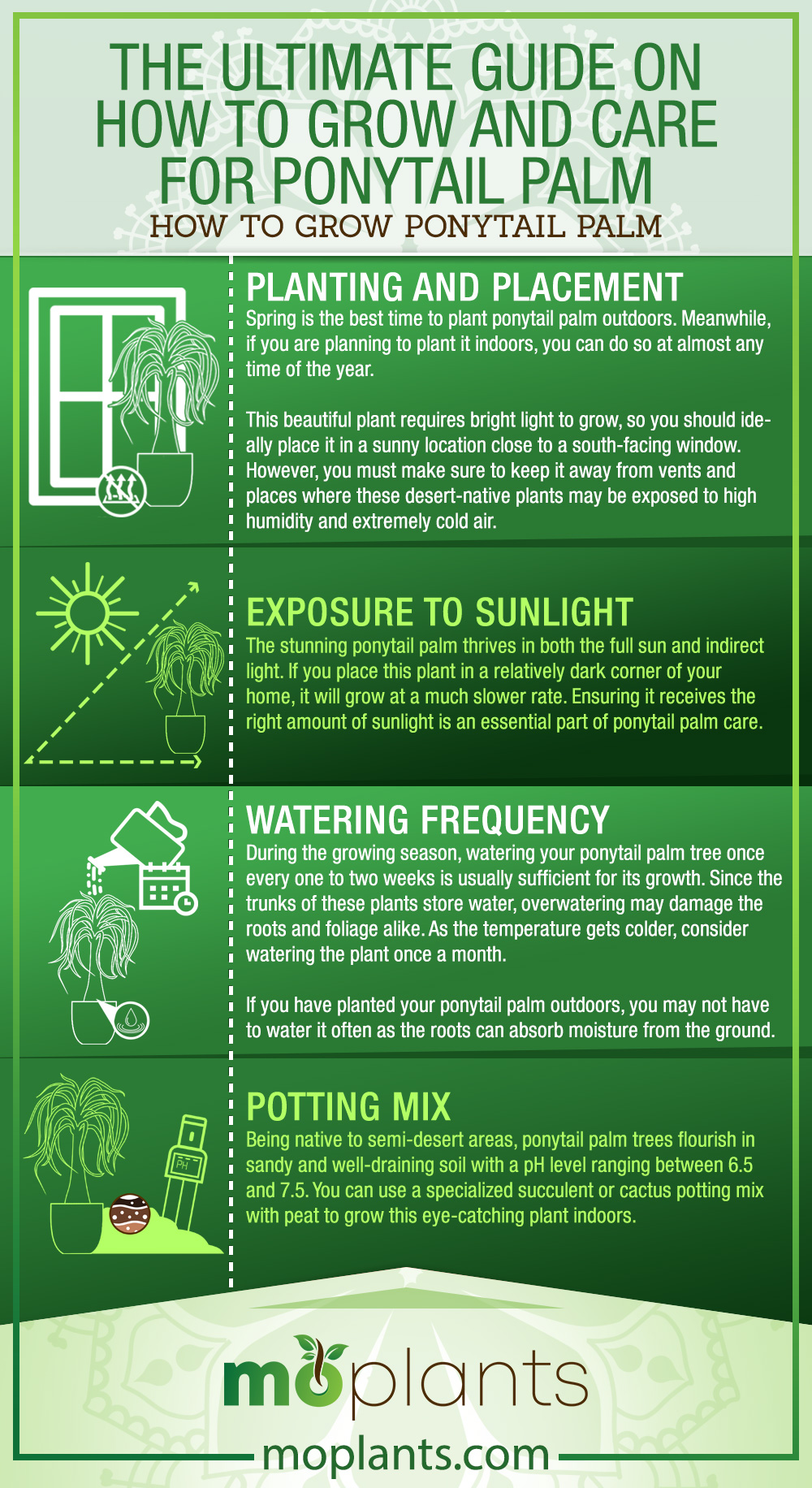
Ponytail Palm Propagation Method
The easiest way to multiply ponytail palm is by removing and replanting the small pups that sprout from the base of the mature plant or tree. These pups are essentially the miniature version of the parent plant. Propagating them allows home gardeners to increase their collection of this show-stopping succulent without breaking a sweat.
For effective ponytail palm propagation, gently remove the soil at the bottom of the plant and carefully pull separately the base of the pup from the adult plant. Please make sure to use a sharp and sterilized knife to cut the offshoots about four inches tall and start forming a root base.
You can place these pups in a container full of sand-based cactus mix. Once the rooted end of the offshoot is inside the potting medium, slightly moisten it using a water spray and cover the container with plastic wrap. It would be best to place the young pup in a warm spot that receives moderate light. You can uncover the container every few days and mist the soil until the pup develops roots and anchors itself to the potting medium.
Ponytail Palm Care Tips
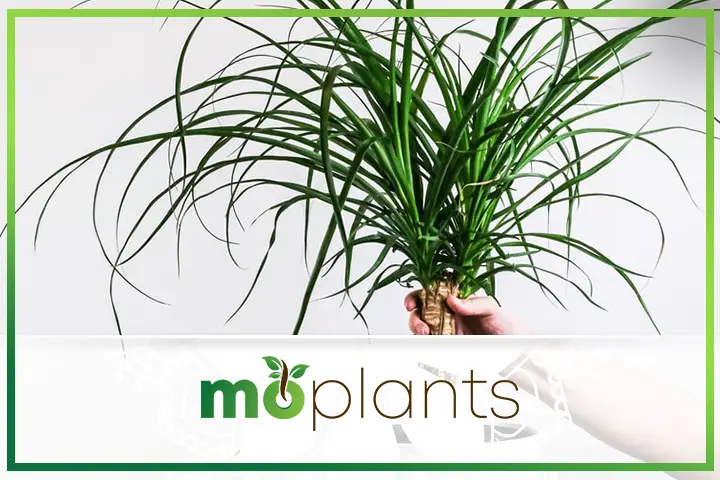
Let’s look at some tips on how to care for ponytail palm plants in your home.
Temperature
Ponytail palm care requires providing the plant with a somewhat consistent temperature throughout the year.
This plant does well in warm temperatures ranging between 60 and 80 degrees Fahrenheit during the day and around 50 degrees Fahrenheit during the night. If you have placed your potted ponytail palms on the terrace or patio, please make sure to bring them indoors as soon as the temperature drops to 45 degrees Fahrenheit.
Humidity
Ponytail palm trees thrive in arid conditions. Therefore, they don’t require much humidity to stay fresh and healthy.
Pruning and Trimming
Though you can prune and trim a ponytail palm tree at any time of the year, it is best to do so during the spring and summer months so the new leaves can grow back quickly. You should consider using clean and sterilized bonsai shears to trim the top of the plant to encourage new growth that cascades downwards like a ponytail.
Moreover, don’t forget to remove any dead or wilted leaves to ensure your plant looks visually appealing at all times.
Fertilizing
Ponytail palm care is relatively easy as this plant only requires occasional feeding. Typically, a slow-release pellet fertilizer once in spring and summer, respectively, would be more than sufficient for the plant. Feeding it more often can be counter-effective and result in brown leaf tips.
Repotting
To keep your plant short and compact, grow it in a shallow container filled with succulent potting mix. Since these plants are slow growers, you likely won’t have to repot them for a couple of years.
Nonetheless, if you want your tree to become taller and wider, consider repotting it every year during the spring months. Moving the plant to a larger container helps the roots, stem, and foliage grow effectively.
Common Ponytail Palm Problems and How to Solve Them
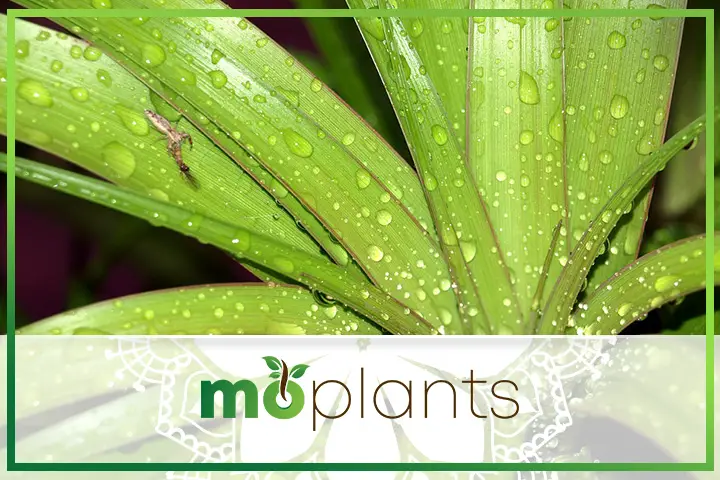
Here are some common ponytail palm issues and tips on how to troubleshoot them.
Yellowing Leaves
If the leaves of your plant are turning yellow, it is usually a sign of overwatering. The best way to counter this problem is to cut down on watering and move the plant to a warmer, sunnier location. Droopy leaves and softened base are also tell-tale signs of overwatering.
Brown Leaf Tips
Brown and crispy leaf tips indicate your plant is not receiving enough water. While ponytail palms are highly drought-resistant, they do require at least bi-monthly watering during the growing season to stay alive. It would be best to prune the brown leaves before watering the plant as required.
In addition, feeding the plant too often can also result in brown foliage. So, if you suspect you have been applying fertilizer too often, please consider holding back for a few months and see the difference for yourself.
Common Pests and Diseases
Ponytail palms are susceptible to spider mites, mealybugs, and scales – the most common pests posing a risk to almost all houseplants. You can use horticultural oils and insecticidal soaps to ensure bugs don’t damage your hardy plant beyond repair.
Infographic

Popular Types of Ponytail Palm
Here are some of the most well-known types of ponytail palm that you should know about.
Beaucarnea Recurvata Gold Star
The Gold Star ponytail palm is an ornamental cultivar of the species. It features delightful foliage that is streaked in chartreuse hues. Moreover, this plant prefers full sun and can grow as tall as eight feet in USDA zones 9 to 11.
Beaucarnea Guatemalensis
Yet another popular type of ponytail palm, Beaucarnea guatemalensis, boasts a swollen trunk that is divided into thick branches featuring tufts of glossy and twisted leaves. The foliage tends to be redder near the base, earning the plant the nickname of red ponytail palm. This particular variety can grow up to 15 feet tall.
Beaucarnea Lindheimeriana
The low-growing plant is more commonly referred to as Devil’s Shoestrings due to the sturdy leaves that trail across the ground and make it difficult for people to walk without tripping over them. The trunk of this plant is barely visible from underneath the foliage. Therefore, it may appear like a common shrub at first glance.
Ponytail Palm FAQs
Now that you know how to grow and care for ponytail palm trees let’s look at some of the most frequently asked questions about this eccentric houseplant.
Is it okay to mist ponytail palm?
Misting the plant now and then will keep the foliage clean and healthy. However, you should refrain from misting your ponytail palm too often.
How long can a ponytail palm tree go without water?
On average, a ponytail palm plant can go without water for four weeks without showing any signs of dehydration.
What kills a ponytail palm?
Nothing will kill your ponytail palm quicker than overwatering. Hence, if the soil of your houseplant appears waterlogged, please make sure to move its container to a brighter location.
Do ponytail palm trees have deep roots?
No, ponytail palms have relatively shallow roots. It makes the plant easy to repot.
To summarize, ponytail palm is one of the best plants to grow indoors and outdoors alike. You only have to water it once every seven to 14 days during the summer months and once every 30 days during winters. If treated with care and affection, this splendid tree can last for several decades without facing any serious problems.
Moreover, the ponytail palm’s odd yet fascinating appearance makes it a perfect addition to any home décor. This iconic plant’s thick and leathery leaves grow from the top of the swollen stem and flow downwards, resembling a ponytail. It is also an ideal companion for those seeking an attention-grabbing yet low-maintenance green beauty to brighten their home.

